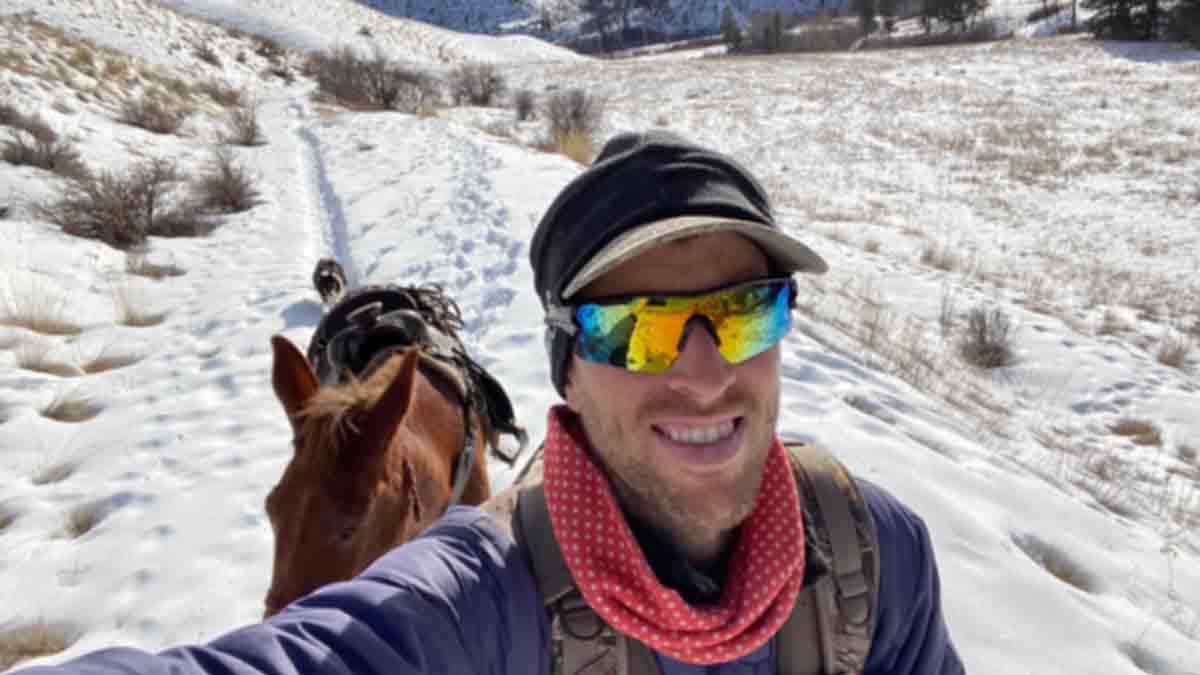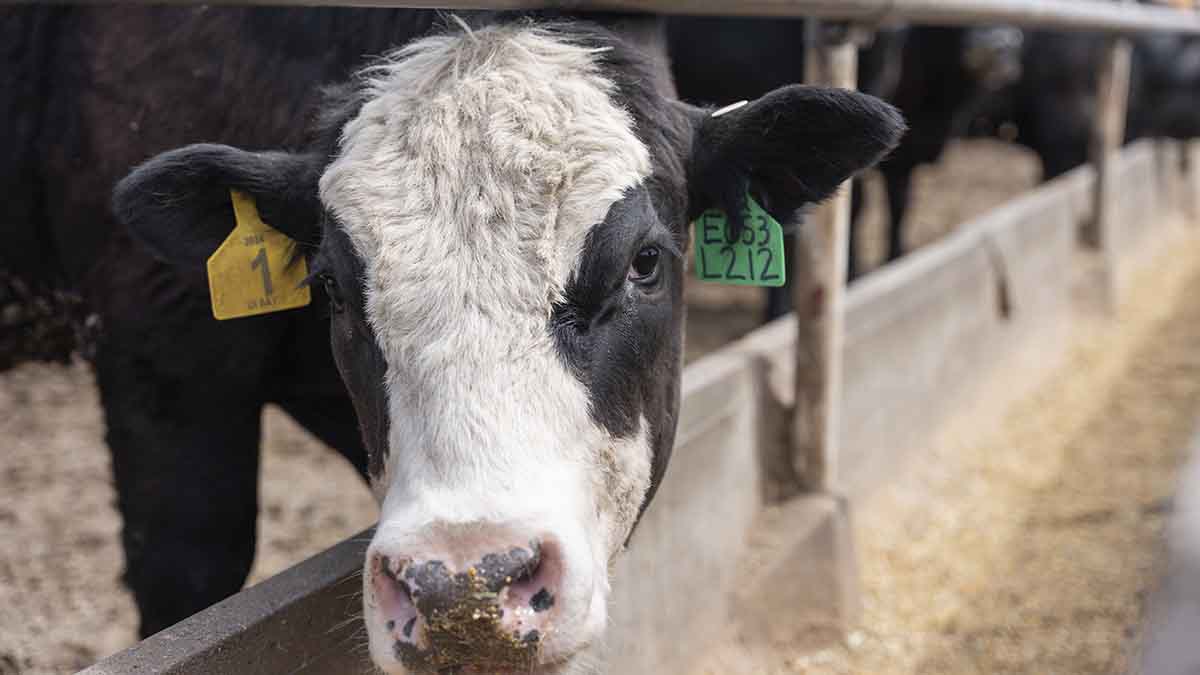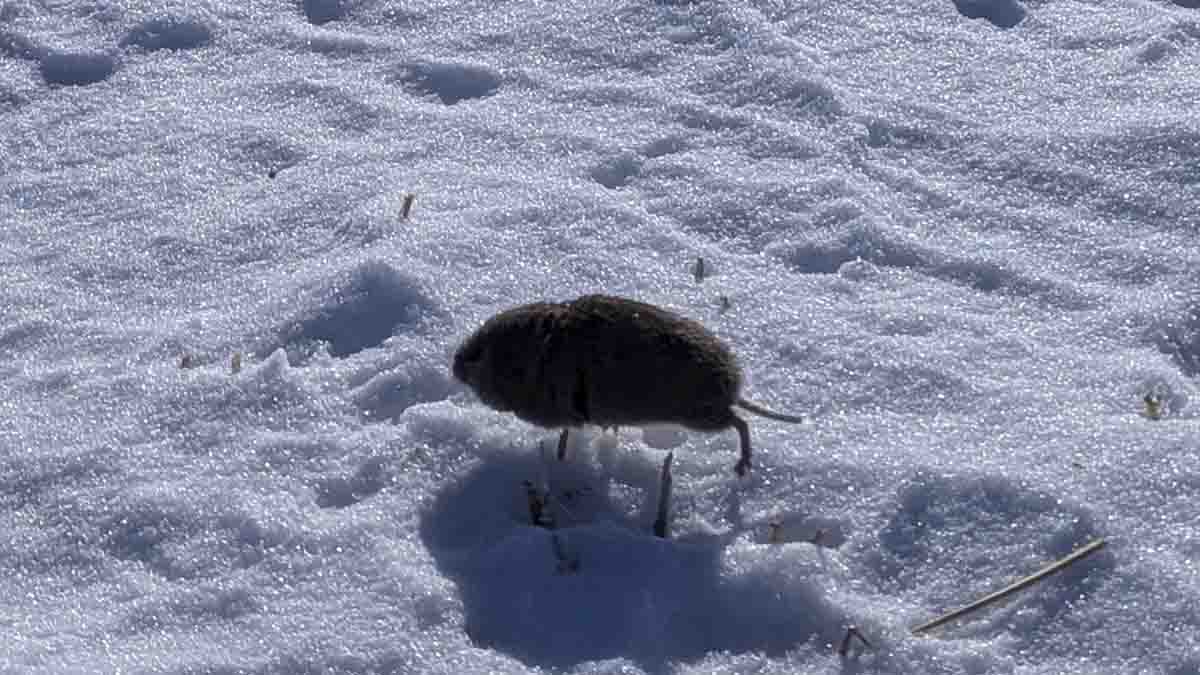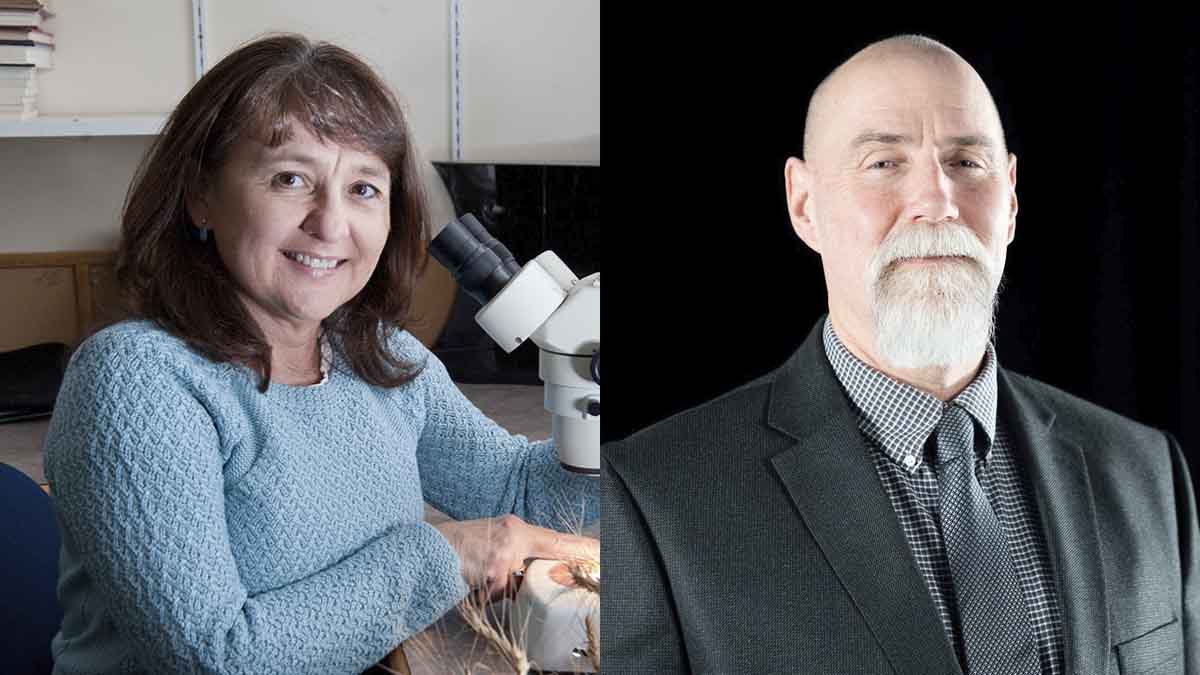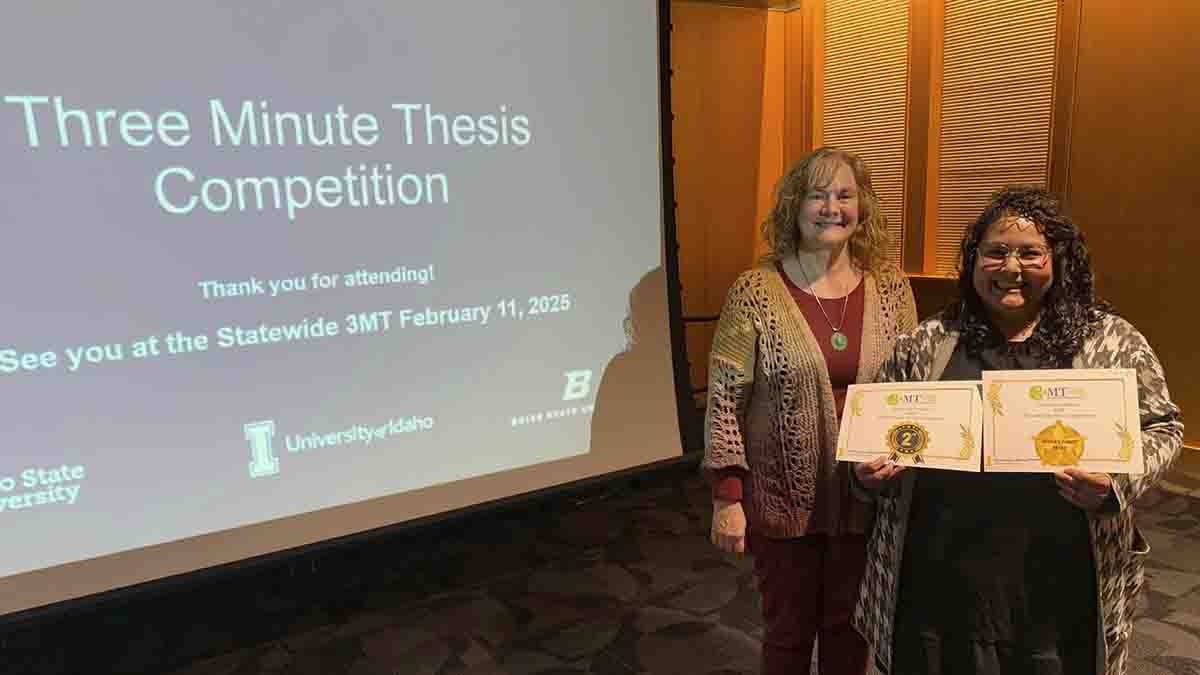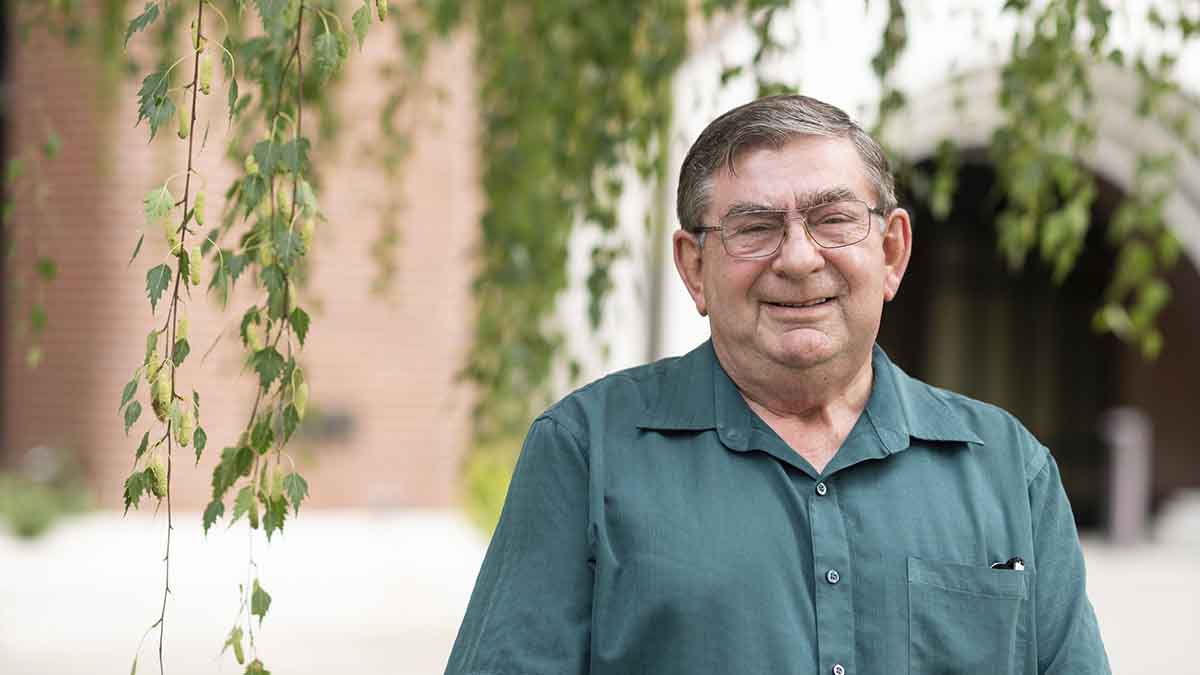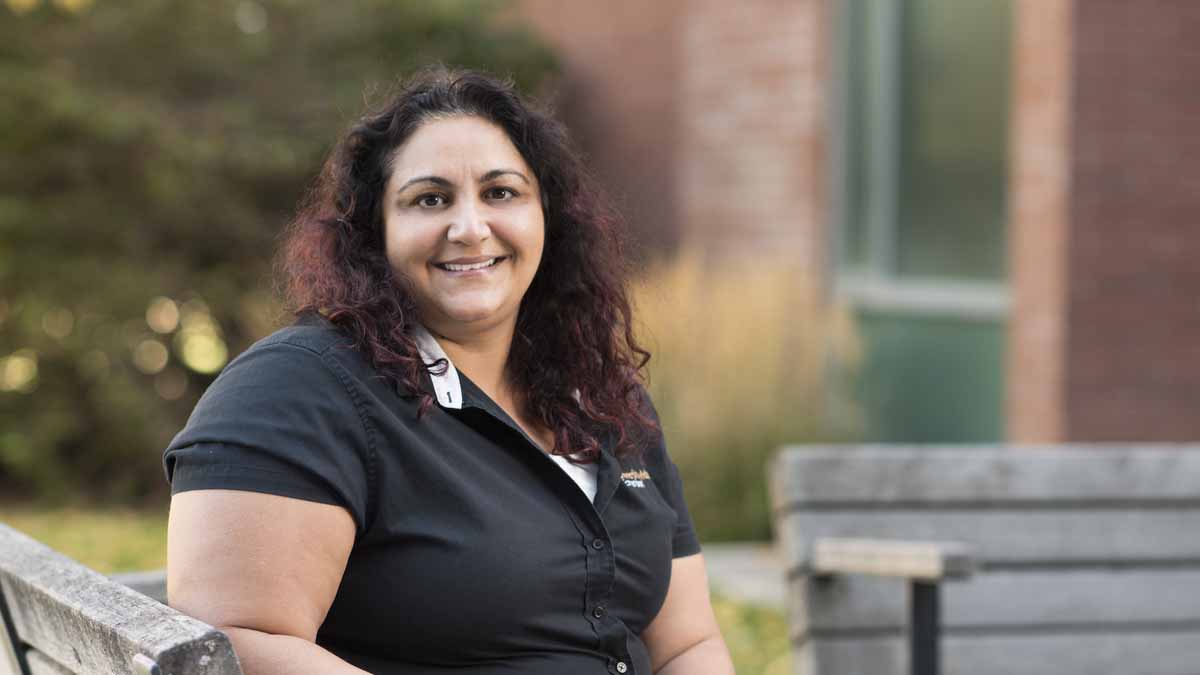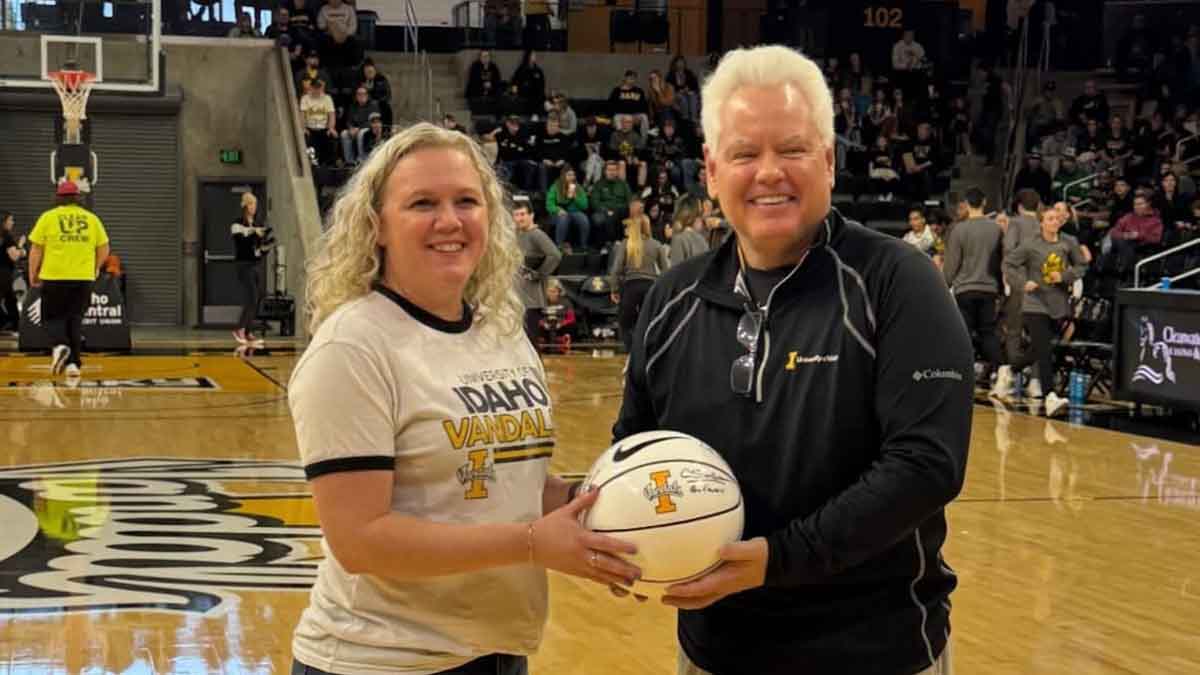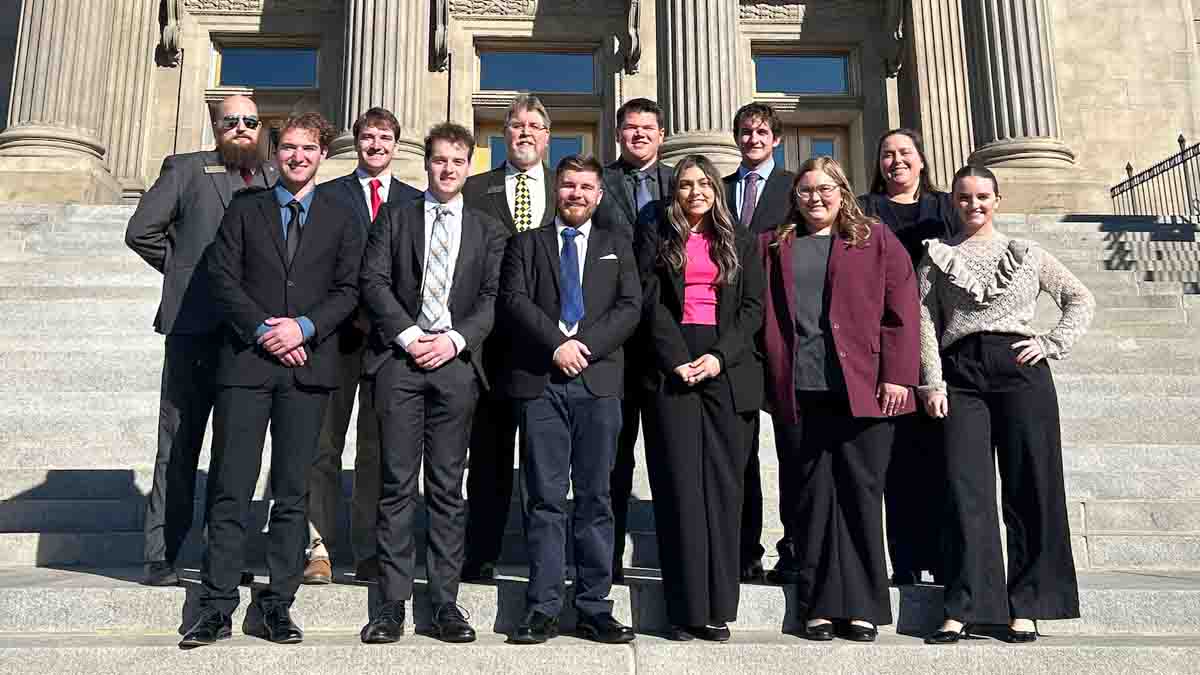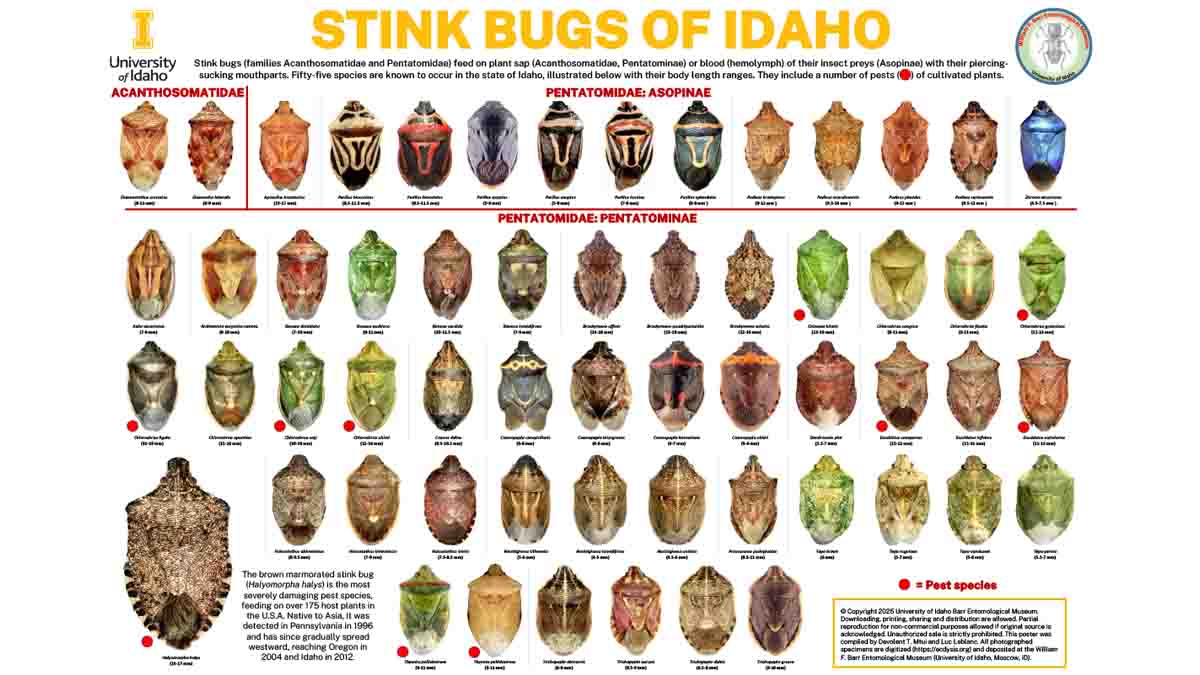Catching Up with CALS — Feb. 5, 2025
Dean's Message — Pillars for Success
I’ll soon be visiting the state’s Capitol one last time to address lawmakers about the myriad accomplishments and contributions of our Agricultural Research and Extension Service (ARES), making the case that it’s a winning investment. On Feb. 10, I’ll speak before the Joint Finance-Appropriations Committee (JFAC), which analyzes available revenue against state agency funding requests to set a balanced budget. The address will be streamed live. Specifically, I’ll be asking them to approve the overall ARES budget in addition to $157,900 in ongoing funds to hire a viticulture and small fruits research and Extension specialist to be based at the U of I’s Parma Research and Extension Center and $250,100 in ongoing funds toward building maintenance costs for our forthcoming Idaho Center for Agriculture, Food and the Environment (Idaho CAFE), which will include the nation’s largest research dairy in Rupert. Furthermore, I’ll be requesting funding toward changes in employee compensation. Following my presentation to JFAC, I’ll also present to the House Agricultural Affairs Committee on Feb. 12 and the Senate Agricultural Affairs Committee on Feb. 13. With my June retirement date drawing near, I’d like to express my gratitude to our governor and our state lawmakers for their steadfast support of CALS. A lot rides on these brief presentations to the Legislature, but we’re thankful to live in a state in which our leaders understand the importance of agricultural research and Extension, and that they also recognize CALS is helping to move Idaho agriculture forward.
Our lawmakers’ confidence in our efforts is well founded. I’ve given some thought lately to the core standards Scott Green emphasized shortly after becoming the university’s 19th president in July 2019. Green described three pillars of excellence, challenging each college to prioritize making strides in those key areas. The pillars include student success, moving toward achieving an R1 designation under the prestigious Carnegie Classification of Institutions of Higher Education and effectively telling our story to stakeholders. Student enrollment in CALS has been at or near record levels throughout the past four years, and we’re a campus leader in student retention. Our Dean’s Excellence Fund helps support our 30 student clubs and organizations, as well as other avenues to promote student success. Furthermore, our CALS Ambassadors program comprises some of our college’s top students, who attend recruiting events and conferences and visit high schools to spread the word about how fulfilling it is to be a Vandal. Regarding our efforts to achieve R1 status, which is reserved for institutions with “very high research spending and doctorate production,” Carnegie’s updated methodology requires institutions to average at least $50 million in total research spending and graduate at least 70 research doctorates over a three-year period. Currently, U of I has 606 students in doctoral programs, including 79 CALS students. Over the past four years, the university has graduated 77 doctoral students per year on average, including 10.5 students on average from CALS. Our college has also enjoyed record-setting years lately in terms of bringing in external grants, with the total peaking at $91.56 million in 2023.
As a college, we have an amazing story to tell and we’re doing an outstanding job of sharing it, understanding the good work we do is all for naught if few people are aware of it. Niche.com now recognizes CALS as being a top program in the nation, ranking us at No. 13 among colleges of agricultural sciences for 2025. We have a physical presence in 42 of Idaho’s 44 counties through UI Extension, which allows us to provide outreach to communities in every part of the state. In 2024, our UI Extension team raised the bar by making 450,103 direct contacts with stakeholders. Through partnerships with industry, we’ve amplified our messages and reached more producers, and we’ve afforded lawmakers the chance to witness our work firsthand by including them in tours of our research and Extension centers. Our digital media platforms are constantly refreshed, engaging and content rich, and we’re sending regular feature stories about our import research efforts to media far and wide. I’ve personally prioritized regular attendance at meetings, conferences, summits and other forums, demonstrating our transparency and sharing our impacts on Idaho’s quality of life.
We also have several new facilities operating, as well as others under construction, to enhance our research capabilities and better serve the state both on and off campus. In the coming years, these will take CALS to new heights, including Idaho CAFE (opening in 2026), the Idaho Center for Plant and Soil Health in Parma (opened in 2024), the Seed Potato Germplasm Laboratory (opened in 2022), and the Meat Science and Innovation Center Honoring Ron Richard (with planned opening in 2025). We’ve built strong pillars for success, and we’re not done building. Through our efforts, we strengthen our brand, raise awareness of our programs and entice more students to pursue higher education within CALS.

Michael P. Parrella
Dean
College of Agricultural and Life Sciences
By the Numbers
Idaho is the No. 1 potato-producing state in the U.S., with an annual production of about 135 million hundredweight. In 2024, Idaho growers planted 312,000 acres of potatoes. During the Idaho Potato Conference, hosted by University of Idaho Jan. 22-23 in Pocatello, leaders with the National Potato Council presented a report from Michigan State University economists on the potato industry’s contribution to the national economy. According to the estimates, the U.S. potato industry generated about $100.9 billion in economic activity in 2021, supporting 714,000 jobs. About 20% of U.S. potatoes are exported. From July 2022 through June 2023, the U.S. exported $2.2 billion in potatoes and potato products.
Our Stories

Historic Apple Quest
Unkempt groves of fruit trees are the last vestiges of historic homesteads once scattered throughout central Idaho’s Frank Church — River of No Return Wilderness.
Most of those homesteads were acquired by the U.S. Forest Service, which demolished the buildings and infrastructure and allowed nature to reclaim the landscape.
Andrew Armstrong — superintendent of a University of Idaho research facility located at the heart of the wilderness area, the Taylor Wilderness Research Station — has been on a quest to find those old homesteads and preserve long-lost heritage apple varieties that were planted to sustain early settlers. Partnering with Kyle Nagy, superintendent and orchard operations manager of U of I’s Sandpoint Organic Agriculture Center, Armstrong aims to propagate those abandoned trees and reestablish them in a new orchard at Taylor.
For the past two winters, Armstrong, with the College of Natural Resources, has traveled throughout a 15-mile radius of his remote research facility in search of orchards, accompanied only by his mules. He’s taken tree cuttings from four forgotten homesteads in the Big Creek drainage, which is the largest tributary of the Salmon River’s Middle Fork. His cuttings, known as scions, are the width of a pencil and about a year old, each harboring three to four buds. Nagy, with the College of Agricultural and Life Sciences, has grafted the scions to winter-hardy, Russian rootstock and intends to help Armstrong plant the Taylor orchard this spring.
The 15-acre pasture where the orchard will be located already has a water right.
“There are a lot of old ranches that have these really old apple trees and they’re starting to die off,” Armstrong said. “My idea was to collect specimens of these trees and send them off to Kyle for grafting and have a conservation orchard.”
Washington State University will perform genetic testing of the specimens. If any of them prove to be rare or unusual, Nagy intends to also plant them at the Sandpoint orchard he oversees. The trees should grow to be about 20 to 30 feet tall, bearing fruit within three to seven years, and they should remain productive for more than a century.
Heritage varieties often have unique flavor profiles or genetic characteristics that are useful to breeding programs, such as drought tolerance or disease resistance.
“Given the era when these trees were planted, there’s definitely the possibility of some interesting varieties out there,” Nagy said. “It’s good to be able to hold onto those varieties for future generations because once that variety is lost, it’s gone forever.”
Late winter is the best time to collect scions, as the trees are still dormant but are poised to develop buds for the spring. Armstrong collected his initial batch of scions about two years ago. Nagy grafted the cuttings and stored them over the winter in Sandpoint. Unfortunately, voles chewed the bark, killing them all. Armstrong returned to the same homesteads last February and March and sent cuttings from 17 trees to Nagy, who successfully grafted 31 new saplings from 11 trees. This winter, Nagy is storing the saplings in a protected area.
In the future, Armstrong hopes to gather scions from historic homesteads throughout the Middle Fork area.
“We’re trying to keep the history of the place alive,” Armstrong said. “These old ranches have been really special places for keeping some of these heritage varieties alive.”
Taylor has six existing apple trees, as well as a pear tree and several cherry trees. The fruit trees provide a supplemental food source and cider for the U of I student researchers who live in wood-heated cabins at the ranch from August through November. The ranch is Armstrong’s primary residence year-round.
Taylor Wilderness Research Station is the most remote research facility in the lower 48 states, accessible only by a 32-mile hike or by flying in on a bush plane. It’s served by the sole remaining airmail route in the contiguous states.
Purchased by U of I in 1969, the ranch provides invaluable baseline research data from an area that’s largely untouched by humans. The College of Natural Resources has used it for big-game research, studies on predators such as wolves and mountain lions, research on one of only two bighorn sheep populations in the state where no sheep have been introduced by humans and for taking scientific measurements on stream ecology and dynamics. The Idaho Department of Fish and Game operates a stream trap on Big Creek where Pioneer Creek runs through the ranch to study salmon and steelhead.

Waste to Worth
The University of Idaho and the Idaho Sustainable Agriculture Initiative for Dairy (ISAID) will host a national conference April 7-11 focused on finding creative and valuable ways to make use of animal waste.
The Waste to Worth Conference will be hosted at The Grove Hotel, 245 S. Capitol Blvd., Boise, with early registration offered at reduced rates through Feb. 14. Organizers expect 100 to 150 participants representing Cooperative Extension, other research entities, producers, regulators, conservation groups and industry to attend.
The Livestock and Poultry Environmental Learning Community (LPELC), which is a network of professionals from the U.S. and Canada involved in animal agriculture and environmental stewardship, hosts the conference every few years in a different region. Assistant Professor Linda Schott, a UI Extension specialist of nutrient and waste management, and Professor Mario de Haro-Martí, a UI Extension educator based in Gooding County specializing in agricultural nutrient and waste management, are co-chairing the 2025 conference, along with Professor Rhonda Miller, Utah State University’s agricultural environmental quality Extension specialist.
ISAID is funded with a $10 million grant from the U.S. Department of Agriculture’s National Institute of Food and Agriculture and involves 78 U of I faculty, Extension educators and students, with the goal of converting excess nutrients from dairy production into valuable bioproducts including commercial fertilizers and bioplastics.
The conference encompasses all aspects of animal agriculture, also including management of swine, poultry and cattle feedlot waste. It represents an opportunity to showcase the diversity of Idaho agriculture and the scope of the state’s dairy industry. Idaho is the nation’s third largest dairy producing state, and the dairy industry will be emphasized at the forthcoming conference.
“Idaho is a really unique location and climate for dairy production, which is different from other dairy states in the U.S.,” Schott said. “The sizes of our dairies are large, and they’re irrigated, which is a different production system. We also have small agricultural producers and lots of diversity in Idaho agriculture in general that folks coming in from other parts of the country may never have experienced before.”
Schott envisions attendees from other states will benefit by learning about Idaho’s unique approach to dairy production. In turn, Idaho participants will glean fresh ideas through their interactions with participants from other states facing different challenges.
“By hosting folks from elsewhere, we can hear feedback of, ‘Oh, we did this in Wisconsin, or we did this in Texas or New York,’ and get the ball rolling for collaboration,” Schott said.
On the night of April 9, faculty, graduate students and undergraduates will present about 40 posters featuring relevant research. Every student involved in ISAID will present a poster. Student researchers will be eligible to win cash prizes for their presentations.
Michael Parrella, J.R. Simplot Endowed Dean of the College of Agricultural and Life Sciences, will speak during the conference about the university’s forthcoming Idaho Center for Agriculture, Food and the Environment (CAFE), which will include the nation’s largest research dairy in Rupert. Mark McGuire, a University Distinguished Professor in the Department of Animal, Veterinary and Food Sciences who leads the ISAID grant, will discuss accomplishments of the ISAID research team. Other speakers will address water issues and the rise of the bio-circular economy that involves converting waste into useful products. A panel of industry officials will discuss the increasing emphasis on sustainability, and a panel of producers will address how they’re approaching increasing demands to incorporate sustainability practices into their production.
The conference will include three tours highlighting Idaho agriculture on April 8. One tour will visit dairies spanning from Boise through the Magic Valley. A second tour of the Treasure Valley will highlight water and wastewater management, both from urban and agricultural land. A third tour will visit Lucky Peak Dam, emphasizing how irrigation water is supplied in the Treasure Valley, and will also make stops at small agricultural operations to highlight how they’re upcycling manure, as well as the diversity of Idaho cropping rotations.

Vole Damage Survey
University of Idaho Extension educators are surveying southern and eastern Idaho potato farmers to document the scope of their problems with mouselike rodents known as voles.
Extension educators Jason Thomas, Minidoka County, and Danielle Gunn, Fort Hall Reservation, are leading the survey effort, and Extension agricultural economist Patrick Hatzenbuehler will estimate crop losses based on responses.
Hatzenbuehler presented some preliminary data at the Idaho Potato Conference, which U of I hosted in Pocatello Jan. 22-23, based on surveys from 84 respondents. On average, the initial respondents each had 1,465 acres of potatoes affected by voles, which reduced their spud yields by 18% on those acres. Furthermore, 58% of respondents used rodenticide to control voles, investing a combined $2.05 million in those treatments. On a scale of one to five, with five being the most effective, 92% of growers surveyed rated the efficacy of rodenticide treatments at three or less.
Another 16.67% of growers surveyed attempted to control voles through habitat modifications, such as plowing, mowing or installing barriers, and 9.5% of respondents had to replant at least some of their acres.
Area farmers frequently call Extension pest specialists to voice their frustrations about the lack of good options to prevent voles from eating away their profits. Thomas explained he and his colleagues have had no recourse but to offer the same suggestions farmers have tried for years, with limited success.
Thomas has become convinced that the first step toward getting long-overdue help for farmers struggling with voles should be to compile good data.
“As folks were reaching out to me and asking, ‘What do we do about this?’ it was hard to do anything without data,” Thomas said. “My belief is at least I can help tell the story so they can make the case and have some numbers. I know this is an ongoing struggle farmers will continue to have.”
The brief survey focuses on potato production but will also include a question asking farmers to list any additional crops that have been ravaged by voles.
Valley Agronomics has also been soliciting growers to complete the survey, which is available online.
Survey data could support the need for additional investment in research, direct aid to growers or new policies and regulations pertaining to vole control. The UI Extension team chose to focus on potatoes based on the high value of the crop. In addition to losing tonnage, potato farmers with heavy vole damage must often sell spuds with chew marks at a discount for making potato flakes rather than at a premium for making French fries or for the fresh market.
“If we’re successful with potatoes we can move to different crops later,” Hatzenbuehler said.
Many regional grain and alfalfa fields also routinely sustain significant vole damage. Alfalfa damage from voles affects stand longevity and productivity significantly. Decades ago, voles were effectively controlled in Idaho by flood irrigation and moldboard plowing. The shift toward sprinkler irrigation and no-till farming throughout Idaho has been great for soil health, water conservation and the environment, but burrowing voles have also benefited.
“In years past, they’d have one or two years where voles would be bad. It seems like anymore, every year is a bad year,” said UI Extension educator Joseph Sagers, who handles the vole issue in Jefferson County.
This winter, Sagers has been consulting with alfalfa farmers in Terreton, Monteview, Menan and Blackfoot who have experimented with running a roller over snow-covered fields to compact vole tunnels. Following treatments, voles lose their cover and are easily spotted by predators against the white, snowy background.
“They have a whole bunch of voles coming up to the surface, where they’re eaten pretty quickly,” Sagers said. “This is certainly going to be a useful tool in the toolbox for these farmers.”
Last spring, vole populations in at least 11 counties reached epidemic levels, causing significant damage to crops and rangeland.
Heading into winter, Gunn advises growers who have had serious vole problems to consider removing or modifying vole habitat and food sources and to remove snow, if feasible. Zinc phosphide is the most effective rodenticide for voles but cannot be applied when soil moisture is high or there’s precipitation. Anticoagulant rodenticides cannot be applied directly to any feed crops but may be applied to field perimeters.
“A survey is instrumental in helping UI Extension educators collect important information regarding vole populations and cyclicity, as well as data regarding crop and range loss due to vole infestations,” Gunn said. “The data will be submitted to state and federal agencies to demonstrate the significant need for programming and funding to help mitigate the harmful effects of these vertebrate pests.”
Faces and Places
Professor Juliet Marshall has been named associate director of the Idaho Agricultural Experiment Station. In this role, Marshall will work with Interim Director Matt Powell to provide support to faculty at U of I research and Extension centers.
Professor Don Edgar has been named head of the University of Idaho Department of Agricultural Education, Leadership and Communications. Edgar joined U of I in January 2024 after stops at New Mexico State University, University of Georgia, University of Arkansas and South Dakota State University. In 2023 he received the Distinguished Research Award, Western Region from the American Association of Agricultural Education.
Rita Franco, a doctoral student studying nutritional sciences, who placed second in the University of Idaho Three Minute Thesis competition hosted in Pitman Center on Nov. 14, will be among four graduate students from each of the state’s research institutions — U of I, Boise State University and Idaho State University — who will participate in the statewide Three Minute Thesis Competition, which will be hosted from 2-4 p.m. Mountain Time Feb. 11 at the Bennion Student Union Building at U of I Idaho Falls and livestreamed. The 12 participants will have three minutes to present their research to a panel of judges and a live audience. Franco has been studying the impact of egg consumption on child health in Guatemala under the mentorship of Assistant Professor Ginny Lane.
Members of the Student Idaho Cattle Association recently attended the Idaho Cattle Association Convention in Sun Valley.
Bob Collier, head of the Department of Animal, Veterinary and Food Sciences, retired from U of I on Jan. 31 after five years of service. Professor and Extension Dairy Specialist Mireille Chahine will serve as acting department head while a national search is conducted for a permanent replacement.
Sara Matthews, a senior instructor in the Margaret Ritchie School of Family and Consumer Sciences, was nominated by CALS child development students to be the featured faculty at the Jan. 18 Vandal women’s basketball game.
University of Idaho’s 2025 AgEc 410 “Experiencing the Idaho Agricultural Policy Making Process” class recently visited the Idaho Capitol building. The trip was sponsored by the Food Producers of Idaho. Pictured are instructors Chris McIntosh, Tim Nadreau and Jessica Windh, as well as students (in no particular order) Sam Kerner, Layla Knight, Madi Passmore, Brock Phillips, Hannah Poland, Oree Reynolds, Tristan Van Komen, Caleb Vernon and Connor Wells.
University of Idaho agricultural economist Patrick Hatzenbuehler and UI Extension educator Doug Finkelnburg, Nez Perce County, are seeking agricultural producers throughout the Pacific Northwest to complete a survey regarding their experiences with the costs and challenges of weed management. The survey takes 10 minutes to complete, and participants will be eligible to win $50 gift cards. The survey will close on Feb. 28.
Luc Leblanc, curator and manager of the William F. Barr Entomological Museum, recently published a poster titled “Stink Bugs of Idaho.” Idaho is home to 55 species of stink bugs (families Acanthosomatidae and Pentatomidae), which feed on plant sap or blood of insect prey. They include a number of pests of cultivated plants.







Events
- Feb. 5 — East Idaho Cereals Conference, Fort Hall
- Feb. 6 — Building a Marketing Strategy for Your Specialty Food Business, Online
- Feb. 18 — 2024 CALS Alumni and Friends Awards, Boise
- Feb. 19, March 19, April 16 — 2024-2025 Heritage Orchard Conference, Online
- Feb. 20 — Virtual Food Safety Program: Dehydration Basics, Online
- Feb. 25 — Our Gem Speaker Series: Water Quality Trends Guide Remediation (Lauren Zinsser), Online
- March 4, 11, 18, 25 — Spring 2025 Farm Financial Analysis class (pdf), Online







